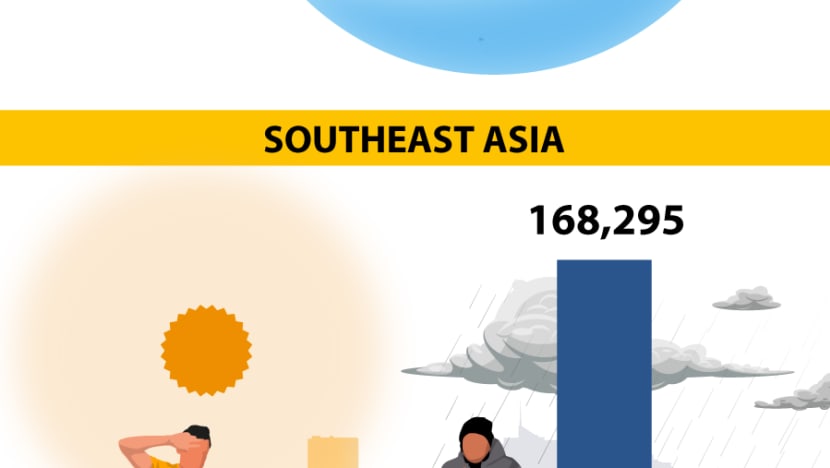Abnormal temperatures responsible for 2.6 million deaths in Asia every year, global study finds

Local temperatures are increasing due to climate change. (Photo: Jack Board)
BANGKOK: More than 5 million deaths, including about 2.6 million in Asia, can be attributed to abnormal hot and cold temperatures that are becoming more common due to climate change.
According to a first-of-its-kind study published in The Lancet Planetary Health earlier this month, 9.4 per cent of global deaths over the past two decades could be linked with extreme temperatures. The vast majority of them are due to cold weather, but climate change is already exacerbating the risks of dangerous heat.
In Southeast Asia, approximately 190,000 annual deaths are caused by “non optimal temperatures”, with about 89 per cent of those being cold-related. But the trends are shifting in the region, with heat-related deaths on the rise.
“Cold temperatures are a bigger problem than hot. But with climate change, hot temperatures will be more and more serious,” said Yuming Guo, the report’s author and professor of Global Environmental Health and Biostatistics at Monash University.
“This can provide very good information to different levels of government about how many deaths are occurring from hot and cold temperatures. They can make a strategic plan to protect their people in the future,” he told CNA.
“Currently, I think many people know that temperature is a risk for human health, especially extreme heat and cold. We can provide this evidence.”
The study published in the sustainable development journal was the first to directly link deaths to temperature on a global scale, by analysing data from 43 countries and 750 cities. It found that Europe suffered the highest rate of deaths due to heat between 2001 and 2019, and sub-Saharan Africa was the most affected by abnormal cold.
“The data covers different climate zones and can be expanded to other countries without data. We can combine the relationship with local weather and local mortality rates to calculate temperature-related mortality anywhere across the world,” Guo said.

The globe is continuing to warm at a rapid pace. Climate Action Tracker predicts 2.9 degrees Celsius of warming above pre-industrial levels by 2100, based on current policies around the world.
The international study led by Guo found that global mean ambient daily temperature increased at an average rate of 0·26 degrees Celsius per decade over the period of the research.
While populations can gradually acclimatise to changes in temperature, extreme events turbocharged by climate change can directly put people’s health at risk.
Powerful heatwave conditions have swept across the northern hemisphere in recent weeks, causing hundreds of people to die in several countries.
READ: Oregon heat wave victims older, lived alone, had no air-conditioner
READ: Hot in the city - Rising night temperatures a potentially major health issue in Asian metropolises
Guo says his team hopes to further refine the data to establish how many excessive deaths are caused by such types of events.
William Goggins, a professor at the Faculty of Medicine at the Chinese University of Hong Kong, who was not involved with the study, said the high mortality rates would be a surprise for those not working in this field and more proof of the need for governments to invest in climate mitigation, especially in urban areas.
“There are parts of the world that are already extremely hot and many people in these areas cannot afford air conditioning. There is also a danger of sudden heat waves in areas where people are not used to heat and may not be prepared, even if they have the resources to do so,” he said.
“We have already seen this occurring and these heatwaves are going to occur with increasing severity and frequency.
“Better urban design, with more green and blue spaces, and building orientations allowing for better wind penetration, has the potential to reduce the urban heat island effect and lower urban heat-related mortality and morbidity,” he said.














